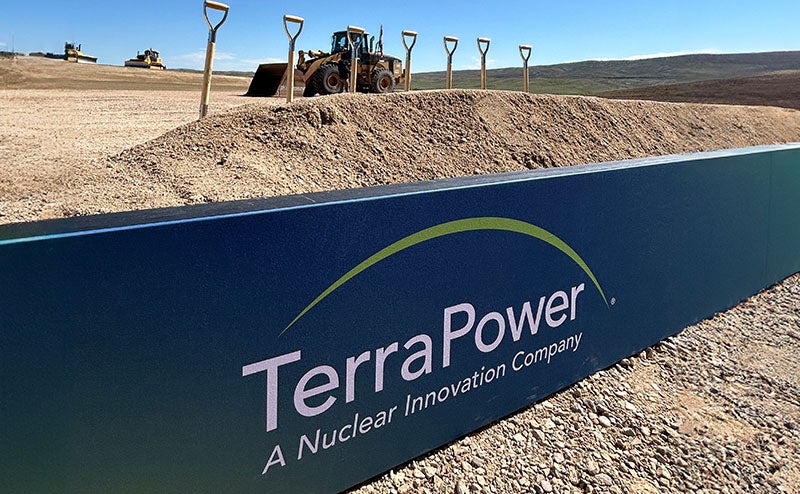By year’s end, Dr. Mukwege had treated hundreds of survivors and their numbers kept growing.
I get to learn about lots of different plans for dealing with climate change. It’s part of my job—climate change is the focus of my work with the investment fund Breakthrough Energy Ventures—but it’s just as likely to come up over dinner with friends or at a backyard barbecue. (In Seattle, we get outside as often as we can during the summer, since we know how often it’ll be raining once fall comes.)
Whenever I hear an idea for what we can do to keep global warming in check—whether it’s over a conference table or a cheeseburger—I always ask this question: “What’s your plan for steel?”
I know it sounds like an odd thing to say, but it opens the door to an important subject that deserves a lot more attention in any conversation about climate change. Making steel and other materials—such as cement, plastic, glass, aluminum, and paper—is the third biggest contributor of greenhouse gases, behind agriculture and making electricity. It’s responsible for a fifth of all emissions. And these emissions will be some of the hardest to get rid of: these materials are everywhere in our lives, and we don’t yet have any proven breakthroughs that will give us affordable zero-carbon versions of them. If we’re going to get to zero carbon emissions overall, we have a lot of inventing to do.
This video features one company with an idea about how to make steel without coal. (I’m an investor in Breakthrough Energy Ventures, which in turn has invested in this company.)
Steel, cement, and plastic are so pervasive in modern life that it can be easy to take them for granted. The first two are the main reason our buildings and bridges are so sturdy and last so long. Steel—cheap, strong, and infinitely recyclable—also goes into shingles, household appliances, canned goods, and computers. Concrete—rust-resistant, rot-proof, and non-flammable—can be made dense enough to absorb radiation or light enough to float on water.
The 520 floating bridge near my house sits on 77 concrete pontoons, each weighing thousands of pounds. In his book Making the Modern World, Vaclav Smil estimates that America’s interstate highway system contains about 730 million tons of concrete in the driving lanes alone. (People sometimes use the terms cement and concrete interchangeably, but they’re not the same thing. You make cement first, and then you mix it with sand, water, and gravel to make concrete.)
As for plastics, they have a bad reputation these days—and it’s true that the amount piling up in the oceans is problematic. But they also do a lot of good. For example, you can thank plastics for making that fuel-efficient car you drive so light; they account for as much as half of the car’s total volume, but only 10 percent of its weight!
So how do we cut down on emissions from all the steel, cement, and plastic we’re making? One way is to use less of all these materials. There are definitely steps we should take to use less by recycling more and increasing efficiency. But that won’t be enough to offset the fact that the world’s population is growing and getting richer; as the middle class expands, so will our use of materials.
In a sense, that’s good news, because it means more people will be living in sturdy houses and apartment buildings and driving on paved roads. But it’s bad news for the climate. Take Africa, for example: Its emissions from making concrete are projected to quadruple by 2050. Emissions from steel could go up even more, because the continent uses so little now.
If using less isn’t really a viable option, could we make things without emitting carbon in the first place? That is, in fact, what we’ll need to do—but there are several challenges. First, these industries require a lot of electricity, which today is often generated using fossil fuels. Second, the processes also require a lot of heat (as in thousands of degrees Fahrenheit) and fossil fuels are often the cheapest way to create that heat.
Finally—and this might be the toughest challenge of all—manufacturing some of these products involves chemical reactions that emit greenhouse gases. For example, to make cement, you start with limestone, which contains calcium, carbon, and oxygen. You only want the calcium, so you burn the limestone in a furnace along with some other materials. You end up with the calcium you want, plus a byproduct you don’t want: carbon dioxide. It’s a chemical reaction, and there’s no way around it.
All three are tough challenges, but don’t despair. Scientists and entrepreneurs are trying to solve these problems and help make zero-carbon materials that will be affordable around the world. Here are a few of the innovative approaches that I’m especially excited about (note that I have investments in two of these companies, Boston Metal and TerraPower):
- Carbon capture. The idea here is to suck greenhouse gases out of the air. I think this is probably the approach we’ll have to take with cement; rather than making it without emissions, we’ll remove the emissions before they can do any damage. There are two basic approaches: One is to grab the greenhouse gases right where they’re created, such as at a cement plant (that’s called carbon capture); the other is to pull them from the atmosphere, after they’ve dispersed. That’s called direct-air capture, and it’s a big technical challenge that various companies are trying to solve. Mosaic Materials, for example, is developing new nano-materials that could make direct-air capture much more efficient and cost-effective. And government policies that create financial incentives to use carbon-removal technology—like federal tax credits that were passed in 2018—will help us deploy it faster.
- Electrification. We may be able to replace fossil fuels with electricity in some industrial processes. For example, as you saw if you watched the video above, Boston Metal is working on a way to make steel using electricity instead of coal, and to make it just as strong and cheap. Of course, electrification only helps reduce emissions if it uses clean power, which is another reason why it’s so important to get zero-carbon electricity.
- Fuel switching. Some industrial processes can’t easily be electrified because they require too much heat. One possible alternative is to get the heat from a next-generation nuclear plant. (As I’ve mentioned before, a company that I helped start, TerraPower, uses an approach called a traveling wave reactor that is safe, prevents proliferation, and creates very little waste.) We also might be able to get the heat using hydrogen fuels, which can be made using clean electricity and don’t emit any carbon when they’re burned. Hydrogen fuels exist today, but they’re expensive to make and transport, so companies are trying to drive the cost down and make hydrogen fuels available at scale. The Swedish steelmaker SSAB plans to build the world’s first fossil fuel-free steel plant powered by hydrogen, which will be running as a pilot project next year. ThyssenKrupp and ArcelorMittal also recently announced projects in this area.
- Recycling. On its own, recycling steel, cement, and plastic won’t be nearly enough to eliminate greenhouse gas emissions, but it will help. The best book I’ve read on recycling—yes, I’ve read more than one!—is called Sustainable Materials With Both Eyes Open, and I highly recommend it.
I’m optimistic about all these areas of innovation—especially if we couple progress in these areas with smart public policies. Companies need the right incentives to phase out old polluting factories and adopt these new approaches. If all of these pieces come together, we will have a climate-friendly plan for steel, as well as cement, plastic, and the other materials that make modern life possible.





